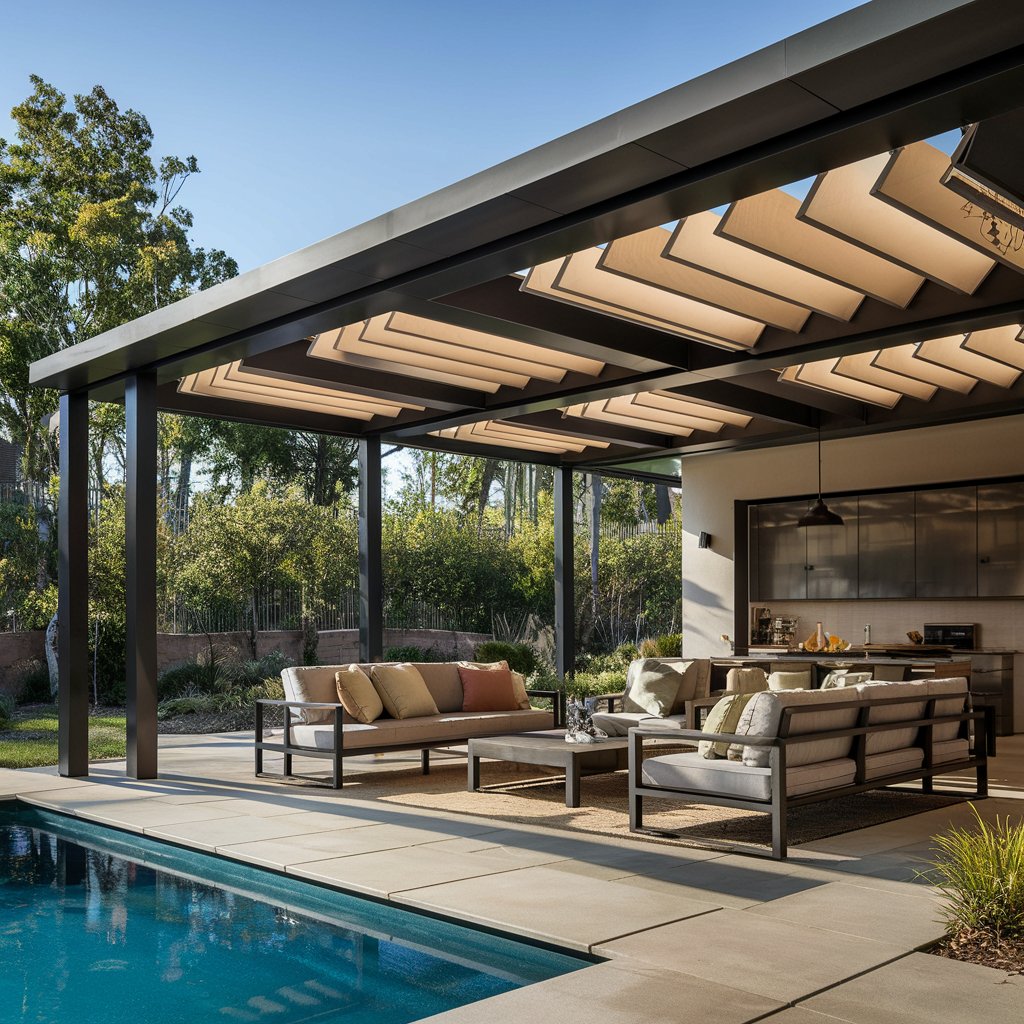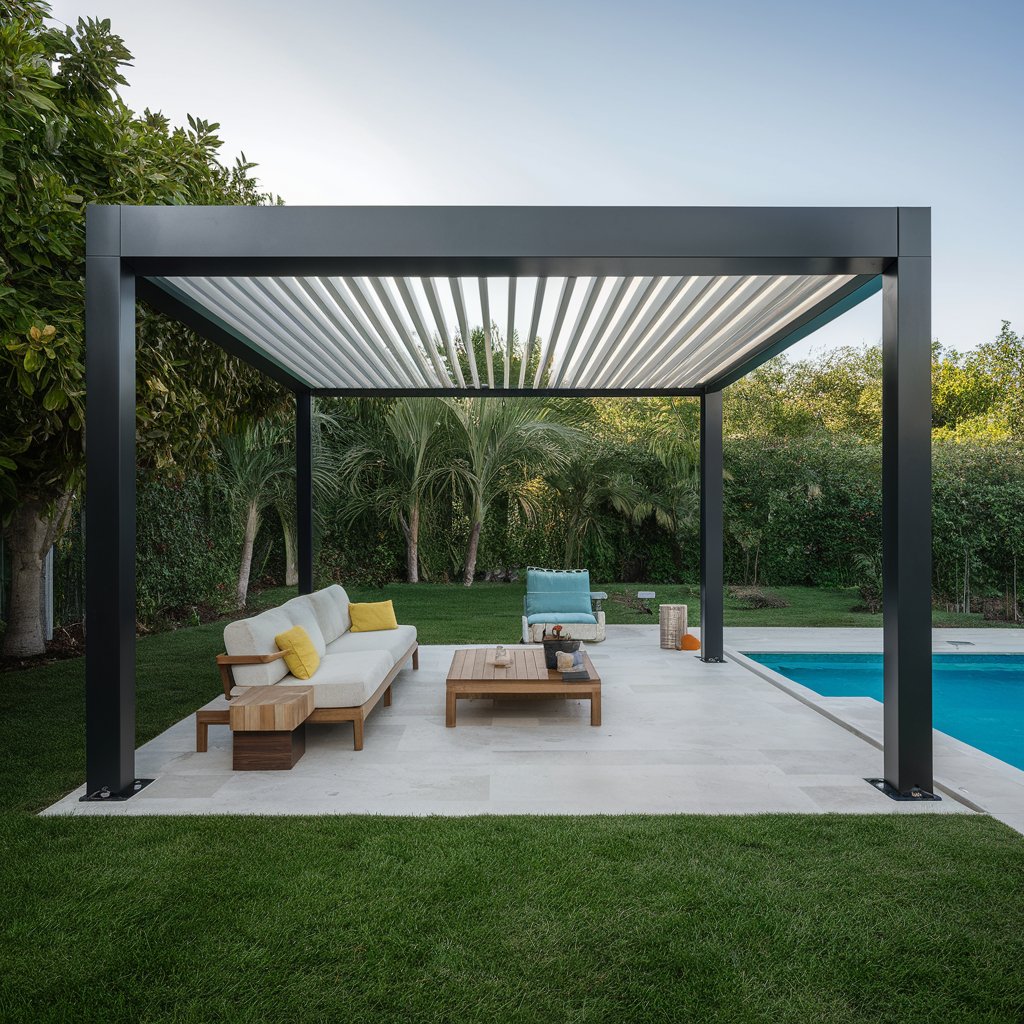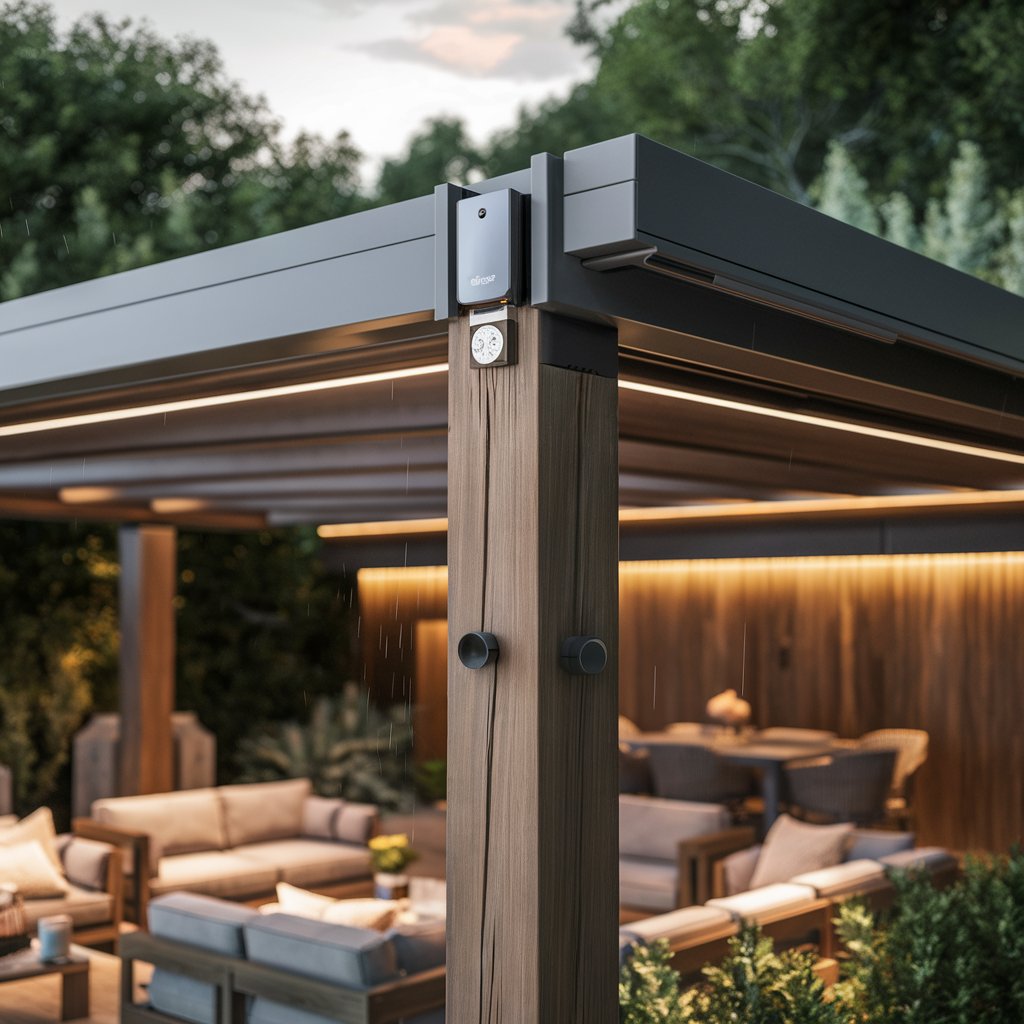Outdoor living spaces have become a significant trend in modern architecture and design, and one of the most versatile and functional features to enhance these areas is the louvered roof panel. These systems offer a unique combination of aesthetics, functionality, and convenience, making them an ideal choice for homeowners, businesses, and public spaces looking to optimize their outdoor environments. In this comprehensive guide, we will explore the intricacies of louvered roof panels, covering their design, benefits, applications, installation processes, maintenance tips, and the future of this innovative technology. By the end of this article, you will have a deep understanding of how louvered roof panels can transform any outdoor space into a more usable, comfortable, and stylish area.

What Are Louvered Roof Panels?
Louvered roof panels are adjustable slats that can be opened, closed, or angled to control the amount of sunlight, shade, and ventilation in an outdoor space. These panels are typically installed in structures such as pergolas, patios, and decks, providing a dynamic solution that adapts to changing weather conditions and personal comfort needs. Unlike traditional fixed roofs, louvered roof systems offer the flexibility to enjoy the sun when desired or create shade and shelter when necessary.
Key Components of Louvered Roof Systems
Louvered roof systems are composed of several essential components that work together to provide adjustable coverage and ventilation. Understanding these components is crucial to appreciating the functionality and versatility of these systems:
- Louvers: The individual slats that can be tilted to various angles. Louvers are usually made from materials such as aluminum, steel, or high-quality plastic, chosen for their durability and weather resistance. The angle of the louvers can be adjusted manually or via a motorized mechanism to control the amount of sunlight and airflow.
- Frame: The structure that supports the louvers. It is typically constructed from robust materials like aluminum or steel to ensure stability and longevity. The frame must be strong enough to support the weight of the louvers and withstand environmental stresses.
- Motorized Mechanism: Many modern louvered roof systems feature motorized controls that allow users to adjust the louvers with the push of a button. This mechanism includes motors, gears, and remote controls or smartphone apps for easy operation. Motorized systems provide the ultimate convenience, enabling users to quickly respond to changing weather conditions without manual effort.
- Weather Seals: These are used to prevent water ingress when the louvers are closed, ensuring that the area beneath remains dry during rain. Weather seals are crucial for maintaining the waterproof integrity of the system and protecting the outdoor space below.
Types of Louvered Roof Panels
There are several types of louvered roof panels, each designed to meet specific needs and preferences. The choice of system depends on factors such as budget, desired level of convenience, and specific application requirements:
- Manual Louvers: These require manual adjustment using a crank or lever. While they are more affordable, they lack the convenience of motorized systems. Manual louvers are suitable for smaller installations or areas where budget constraints are a primary consideration.
- Motorized Louvers: These offer remote control or smartphone app-based adjustment, providing ease of use and the ability to make quick changes according to weather conditions. Motorized systems are ideal for larger installations or situations where frequent adjustments are necessary.
- Fixed Louvers: Unlike adjustable louvers, these are set at a fixed angle. They are often used in applications where consistent shading or ventilation is required. Fixed louvers provide a simple and cost-effective solution but lack the flexibility of adjustable systems.
- Solar-Powered Louvers: These come equipped with solar panels to power the motorized adjustment mechanism, making them an eco-friendly option. Solar-powered systems reduce energy consumption and operating costs, offering a sustainable solution for outdoor spaces.
Materials Used in Louvered Roof Panels
The choice of materials for louvered roof panels significantly affects their performance, durability, and aesthetics. Common materials include:
- Aluminum: Lightweight, rust-resistant, and durable, aluminum is a popular choice for both louvers and frames. It can be powder-coated in various colors to match the design of the outdoor space. Aluminum’s corrosion resistance and ease of maintenance make it an ideal material for outdoor applications.
- Steel: Strong and durable, steel provides excellent support for larger structures. However, it may require additional treatment to prevent rust and corrosion. Steel is often used in heavy-duty applications where structural strength is paramount.
- Wood: While less common due to maintenance requirements, wood can provide a natural and aesthetically pleasing look. It is typically treated to withstand the elements. Wood offers a traditional and warm appearance, making it suitable for certain design styles.
- PVC and Composite Materials: These offer a balance between durability and low maintenance. They can mimic the appearance of wood while providing better weather resistance. PVC and composite materials are often used in residential applications where aesthetics and ease of maintenance are important considerations.
Benefits of Louvered Roof Panels
Louvered roof panels offer numerous advantages, making them a valuable addition to any outdoor space. Here are some of the key benefits:
- Adjustable Shading and Ventilation: The ability to control the angle of the louvers allows for precise regulation of sunlight and airflow, creating a comfortable environment regardless of weather conditions. This adaptability enhances the usability of outdoor spaces, making them suitable for a wide range of activities.
- Weather Protection: When closed, louvered roof panels provide excellent protection from rain, snow, and harmful UV rays, allowing for year-round use of outdoor spaces. This weather resistance ensures that outdoor areas remain functional and comfortable, even during adverse weather conditions.
- Energy Efficiency: By controlling the amount of sunlight entering a space, louvered roofs can help reduce cooling and heating costs. In warmer months, they can block out the sun to keep the area cool, while in cooler months, they can be opened to allow sunlight to warm the space. This energy efficiency contributes to lower utility bills and a reduced environmental footprint.
- Aesthetic Appeal: Available in a variety of designs and finishes, louvered roof panels can enhance the visual appeal of any outdoor area. They can be customized to match the architectural style of the property, adding a modern and elegant touch to the space.
- Increased Property Value: Adding a louvered roof system can boost the value of a property by creating additional functional outdoor living space. This investment in outdoor living areas is highly attractive to potential buyers and can significantly enhance the overall marketability of a property.
- Durability and Low Maintenance: Made from high-quality, weather-resistant materials, louvered roof panels require minimal maintenance and can last for many years. The durability of these systems ensures that they remain a reliable and long-lasting feature of any outdoor space.
Applications of Louvered Roof Panels
Louvered roof panels are versatile and can be used in a variety of settings, including:
- Residential: Homeowners use louvered roof panels to enhance patios, decks, and pergolas, creating comfortable and functional outdoor living spaces. These systems provide a flexible solution for enjoying the outdoors while maintaining comfort and convenience.
- Commercial: Restaurants, cafes, and hotels often incorporate louvered roofs in their outdoor areas to provide shade and protection for guests, enhancing the overall experience. Commercial installations benefit from the ability to create attractive and adaptable outdoor dining and lounging areas.
- Public Spaces: Parks, playgrounds, and other public areas use louvered roofs to create shaded areas, making these spaces more comfortable for visitors. Public installations benefit from the durability and low maintenance requirements of louvered roof systems, ensuring long-term functionality.
- Industrial: Warehouses and factories can benefit from louvered roof systems to improve ventilation and control indoor temperatures. Industrial applications benefit from the structural strength and adaptability of louvered roofs, enhancing the working environment for employees.
Installation of Louvered Roof Panels
The installation of louvered roof panels requires careful planning and execution to ensure proper functionality and longevity. Here is a detailed look at the installation process:
Pre-Installation Considerations
Before installing a louvered roof system, several factors need to be considered:
- Site Assessment: Evaluate the area where the louvered roof will be installed, taking into account the size, shape, and orientation of the space. Consider the surrounding environment, including any existing structures or landscaping features. Proper site assessment ensures that the louvered roof system is appropriately sized and positioned for optimal performance.
- Building Codes and Permits: Check local building codes and regulations to ensure compliance. Obtain any necessary permits before starting the installation. Compliance with local regulations ensures that the installation meets safety and legal requirements.
- Design and Customization: Choose the design, materials, and finishes that best suit the aesthetic and functional requirements of the space. Consider whether a manual or motorized system is preferred. Customization options allow for the creation of a louvered roof system that seamlessly integrates with the overall design of the property.
- Professional Installation: While some louvered roof systems can be installed by DIY enthusiasts, professional installation is recommended for larger or more complex projects to ensure proper alignment and functionality. Professional installers have the expertise and equipment necessary to complete the installation to the highest standards.
Installation Process
The installation process for louvered roof panels typically involves the following steps:
- Foundation Preparation: Ensure that the foundation is level and stable. For ground installations, this may involve laying a concrete base or using footings. For wall-mounted systems, ensure that the mounting surface is strong enough to support the structure. A solid foundation is crucial for the stability and longevity of the louvered roof system.
- Frame Assembly: Assemble the frame according to the manufacturer’s instructions. This typically involves connecting the support posts, beams, and crossbars to create a stable structure. Proper frame assembly ensures that the louvered roof system is structurally sound and capable of supporting the louvers.
- Louver Installation: Attach the louvers to the frame, ensuring that they are evenly spaced and properly aligned. If installing a motorized system, connect the louvers to the motorized mechanism. Proper louver installation ensures smooth operation and optimal performance of the louvered roof system.
- Motor and Controls Setup: For motorized systems, install the motor and control components, including any wiring or remote control units. Test the system to ensure that the louvers operate smoothly and respond correctly to the controls. Proper setup and testing of the motor and controls ensure that the louvered roof system operates reliably and efficiently.
- Weather Sealing: Apply weather seals to prevent water ingress when the louvers are closed. This step is crucial for maintaining the waterproof integrity of the system. Proper weather sealing ensures that the louvered roof system provides effective protection against rain and other weather elements.
- Final Inspection: Conduct a thorough inspection to ensure that all components are properly installed and functioning. Check for any misalignments, loose connections, or other issues that could affect performance. A final inspection ensures that the louvered roof system is fully operational and ready for use.
Maintenance Tips for Louvered Roof Panels
To ensure the longevity and optimal performance of louvered roof panels, regular maintenance is essential. Here are some tips for maintaining your louvered roof system:
- Regular Cleaning: Clean the louvers and frame with a mild detergent and water to remove dirt, dust, and debris. Avoid using harsh chemicals or abrasive materials that could damage the surface. Regular cleaning helps maintain the appearance and functionality of the louvered roof system.
- Lubrication: For motorized systems, keep moving parts lubricated to ensure smooth operation. Use a silicone-based lubricant to avoid attracting dust and dirt. Proper lubrication reduces wear and tear on the moving components, extending the lifespan of the system.
- Inspection: Periodically inspect the system for signs of wear, damage, or corrosion. Address any issues promptly to prevent further damage. Regular inspections help identify and address potential problems before they become serious.
- Weather Seals: Check the weather seals regularly and replace any that are damaged or worn. Properly functioning weather seals are crucial for maintaining the waterproof integrity of the system. Replacing worn or damaged seals ensures that the louvered roof system continues to provide effective protection against weather elements.
- Professional Servicing: Schedule professional maintenance for motorized systems to ensure that all components are in good working order. Professional servicing can include detailed inspections, adjustments, and repairs that may not be possible with DIY maintenance. Regular professional servicing helps maintain the reliability and performance of the louvered roof system.
Innovations and Future Trends in Louvered Roof Panels
The technology and design of louvered roof panels continue to evolve, with several exciting innovations and trends shaping the future of this industry. Here are some of the key developments to watch for:
- Smart Controls: Integration with smart home systems allows for voice and automated control of louvered roof panels. Users can set schedules, adjust the louvers remotely, and integrate the system with other smart devices for enhanced convenience. Smart controls offer greater flexibility and customization, making it easier to optimize the use of outdoor spaces.
- Solar Integration: Increased use of solar panels to power motorized systems reduces energy consumption and promotes sustainability. Solar-powered louvered roof systems are an eco-friendly option that aligns with the growing emphasis on renewable energy sources. Solar integration helps reduce the environmental impact of outdoor living spaces while providing reliable power for motorized adjustments.
- Advanced Materials: Development of new materials and coatings enhances durability, weather resistance, and aesthetics. For example, advanced powder coatings can provide better protection against UV rays and corrosion, extending the lifespan of the system. Innovations in materials contribute to the overall performance and longevity of louvered roof systems, making them more reliable and attractive.
- Aesthetic Customization: More options for colors, finishes, and design elements allow for greater customization to match the specific style and preferences of the user. Customization options enable homeowners and businesses to create unique and personalized outdoor spaces that reflect their individual tastes and requirements.
- Enhanced Weather Resistance: Improved technology and design features enhance the performance of louvered roof systems in extreme weather conditions. For example, reinforced frames and advanced sealing techniques can provide better protection against high winds, heavy rain, and snow. Enhanced weather resistance ensures that louvered roof systems remain functional and reliable even in challenging environments.
Conclusion
Louvered roof panels offer a transformative solution for outdoor living spaces, combining functionality, aesthetics, and sustainability. These systems provide adjustable shading and ventilation, weather protection, energy efficiency, and increased property value. With ongoing innovations and advancements in technology, the future of louvered roof panels promises even greater convenience, customization, and performance.
Whether for residential, commercial, or public use, louvered roof panels represent a valuable investment that enhances the quality of outdoor living. By understanding the key components, benefits, applications, installation processes, and maintenance tips, you can make informed decisions about incorporating louvered roof panels into your outdoor space.
As the demand for versatile and functional outdoor environments continues to grow, louvered roof panels will remain at the forefront of outdoor design and technology, offering a smart and stylish solution for any setting.


